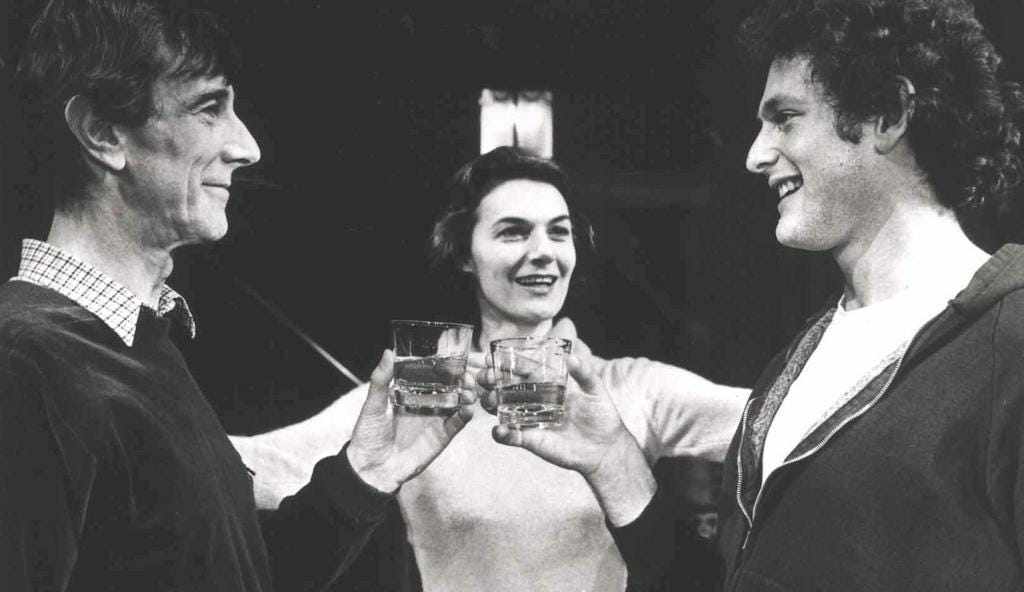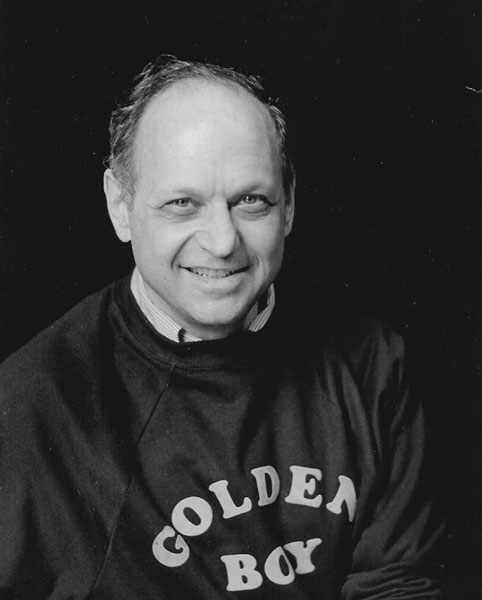
When the legendary Katharine Hepburn, renowned for her film and theatre work, decided to take on the lead in a Broadway musical at age sixty-two, eyebrows were raised. Did she succeed, or fall flat on her face? Here's the lowdown in today's "Theatre Yesterday and Today."
Curiously, when the Connecticut Yankee, Katharine Hepburn, chose to portray the fabled French fashion designer Coco Chanel, it didn't turn as many heads as it did ask the basic question on everyone's minds: can she even sing? Well, ever since Rex Harrison was cast as Professor Henry Higgins in My Fair Lady, there have been many famous names who decided that if they didn't sound exactly like a nightingale in Berkeley Square, then maybe they could get away with talk-singing and warbling more like a New York City pigeon? But if Hepburn was known for anything throughout her career (which began on Broadway in 1928) it was her fearlessness. Always throwing herself into the deep end of the pool (a swimmer who loved nothing more than ice cold water), it was her ferocious commitment to whatever she did that defined her as an actress.

Hepburn’s performance as Coco was an example of star power superseding the show that surrounded her (which was not very good). No one cared. Everyone wanted to see Hepburn in a musical, and even after mediocre reviews, Coco was a sell-out. And as a twelve-year-old, I saw it from the last row of the glorious Mark Hellinger Theatre * on December 31, 1969: the afternoon of a New Year’s Eve I will never forget.
Of Katharine Hepburn, I wrote in my review: “Her performance in this musical which, for all intents and purposes is a bummer, is the most amazing acting performance I’ve seen … the way she can hold the stage in the palm of her hand, singing in her raspy voice (which I find beautiful) will have you in tears when she sings the title song.”
I think I meant “she can hold the audience in the palm of her hand,” but you get the idea. According to my “Play Evaluation Sheet!” (exclamation point all my own), this was my 43rd Broadway show and I sat in G 111, the 4th to last row of the balcony. I paid $4.00.
Priceless.
Of course, Hepburn made not even the slightest effort to portray herself as French. No, what you saw was what you got: a brilliantly charismatic woman (which is what Coco was supposed to have been like anyway), so it worked.

Unfortunately, the show didn’t. It was a project that librettist and lyricist Alan Jay Lerner (My Fair Lady, Camelot) bounced around off of such potential collaborators as his once-solid partner Frederick Loewe and Richard Rodgers. He couldn’t interest either of them, so it fell to André Previn to write the score, the only one this wonderful composer ever wrote for the Broadway stage (working with the jittery Lerner was no picnic). Though Lerner managed some quality writing in his lyrics (he almost always did), he contrived a secondary love story which was pallid. He also confined the actors who portrayed all the men in Coco’s life to only be seen in pre-recorded movies emanating from larger than life picture frames. It was... weird.
Previn composed some beautiful melodies for the score, lushly orchestrated by Hershy Kay (with uncredited assists from Robert Bennett and Luther Henderson). I'm not the only Broadway aficionado with a soft spot for some of this score. It helps that Hepburn was bolstered by such fine talent as the always reliable light comic actor George Rose; a strong singer in David Holliday (who I had seen play Don Quixote in Man of La Mancha earlier that year); and René Auberjonois, camping it up as a gay fashion rival — winner at the age of twenty-nine of that season's Tony Award for Featured Actor in a Musical. The show's other award went to Cecil Beaton for his extraordinary parade of costumes, the likes of which were probably not seen again until last season's The Cher Show, which brought the amazing Bob Mackie his first Tony.

In case you’re wondering, Hepburn lost the Best Actress Tony to her longtime friend Lauren Bacall, who also happened to make her debut in a musical that same season in Applause, a much better received show than Coco — and who, if truth be told, didn't sing any better than Hepburn. ☺️
Coco’s acting, singing and dancing ensemble was enormous. It was choreographed by the still fresh, though hardly untested, Michael Bennett. In fact, the British director who Hepburn insisted on hiring for Coco, Michael Benthall, proved ineffectual at best. A classicist, Benthall didn’t know his way around a musical at all, and proved out of his depth. It fell to the twenty-six-year-old Bennett to fix what was broken, the first time he had been given that chance, five years before A Chorus Line would become his first credit sole effort as a director. Hiring some of the best dancing talent in the field, Bennett oversaw a company that totaled fifty-seven. Among them were such future stars as Ann Reinking (making her Broadway debut); Bob Avian (who was always his right-hand guy and would later co-choreograph A Chorus Line with him); Dan Siretta, who became a fine director and choreographer; and Graciella Daniele, who has been nominated for ten Tony Awards in her long and distinguished career.
And what of Hepburn’s singing? What singing? Honestly, she barely sings a sustained note. But she miraculously more than gets by, with Previn providing music that allowed her to skate the surface. Here she is, in a pre-recorded segment from the stage of the Hellinger, performing "Always Mademoiselle" at the 1970 Tony Awards. Decide for yourself if she manages to sell the song or not (and feel free to skip to 1:30 when the music begins):
There are two unforgettable stories (one onstage and one off) involving Hepburn and Coco. In a cheap, but highly effective bit, she brought the house down with one word. The curtain fell on Act One as the guests were arriving for the all-important showing of Chanel’s comeback collection. When the Act Two curtain rose to reveal an empty salon with debris strewn all about it, Hepburn made her entrance, surveyed the damage in silence, then stopped, paused, and with perfect timing looked up and said, “Shit.”
That’s it. "Shit.” And in 1969 that was enough to stop the show and cause pandemonium. But you know what? If Maggie Smith came to Broadway tomorrow in anything and said “Shit” at the top of Act Two, she'd probably get as big a laugh (or bigger). Some actors can do anything.
The second story is an offstage one. Construction of a new building was going on during Coco’s run directly across the street (it would eventually be home to both the Gershwin and Circle in the Square Theatres), and the sound of the drilling and hammering during the Wednesday matinee hours was driving Hepburn crazy during one very quiet scene. So, she donned a hard hat and paid a visit to the construction workers, managing to charm them into halting their work every Wednesday afternoon at the exact time her scene started until it ended. And if you don’t think the story’s true, then I will direct you to the great actor-director Jerry Adler, who stage managed Coco. He’s the one who told it to me… and he spent ten months side by side with Hepburn.
Little known fact: Coco has the distinction of being the first show to charge a top price of $15 for all evening performances. Shocking.
But I’ll leave the final word on this musical to Brendan Gill, the longtime critic for the New Yorker, who in his review had one of the all-time great lines: “Coco is a terrible show and well worth going to see.”
* The Mark Hellinger Theatre was sold when Broadway was experiencing a downturn in its fortunes and hasn’t had a show in it since the disastrous Peter Allen musical Legs Diamond in 1989. Now owned by the Times Square Church, it is at least being beautifully maintained, and I am not alone in the hopes that one day the house where My Fair Lady once played will be a theatre again.
If you enjoy these columns, check out Up in the Cheap Seats: A Historical Memoir of Broadway, available at Amazon.com in hardcover, softcover and e-book. Also sign up to follow me here, and feel free to email me with comments or questions at Ron@ronfassler.org.





















Write a comment ...